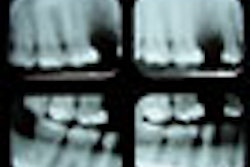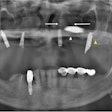The Academy of General Dentistry (AGD) is taking issue with the findings of a study published this week in the journal Cancer that suggests a link between frequent dental x-rays and the risk of developing meningioma, a largely benign brain tumor.
According to the AGD, the study's findings are not applicable to modern dentistry, because the study was based upon an examination of outdated radiographic techniques, which produced considerably more radiation than patients would be exposed to today.
"Modern radiographic techniques and equipment provide the narrowest beam and shortest exposure, thereby limiting the area and time of exposure and reducing any possible risks while providing the highest level of diagnostic benefits," said AGD President Howard Gamble, DMD, in a press release. "Today, patient safety is always maintained with the recommended use of thyroid collars and aprons."
The article, which received attention from many reputable news outlets, could cause the public to decide to limit or even refuse x-rays in an effort to keep their families safe, the AGD noted.
"It is regrettable to think that an article based on outdated technology could scare the public and cause them to avoid needed treatment," said Dr. Gamble. "With the radiography techniques in use today, the amount of radiation exposure is reduced and more controlled than it was in years past."
The Cancer study also contained many inconsistencies and possibilities for error, including the fact that its findings were based upon a population-based case-control study, according to the AGD. This means that it relied upon the patients themselves to recall and self-report past events, many of which were from decades earlier.
The AGD supports radiographic guidelines provided by the ADA and the U.S. Food and Drug Administration and concurs with the ADA that dentists should order dental radiographs for patients only when necessary for diagnosis and treatment.
In addition, the AGD encourages dentists to communicate with their patients and address any unexpressed concerns of radiographic risks in order to reduce fear and promote a better understanding of the benefits and the risks associated with the specific needs of each patient.



















